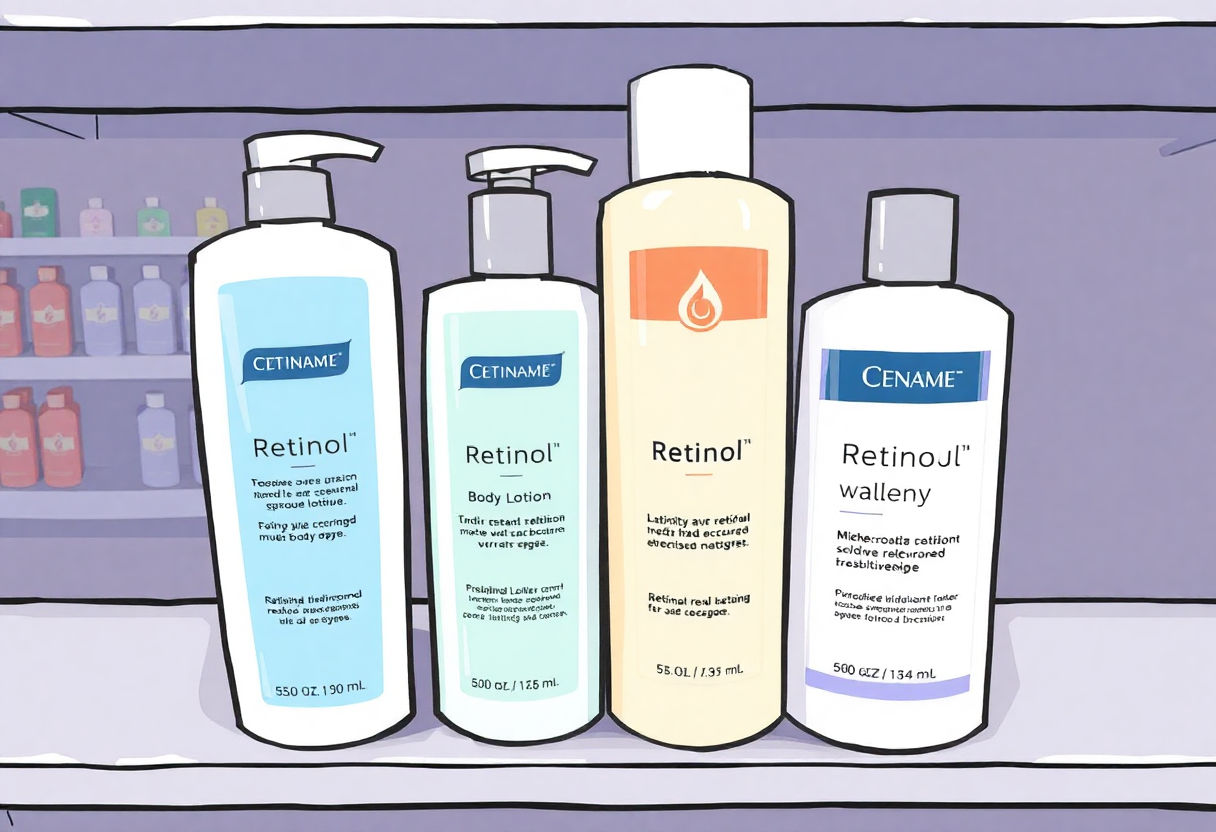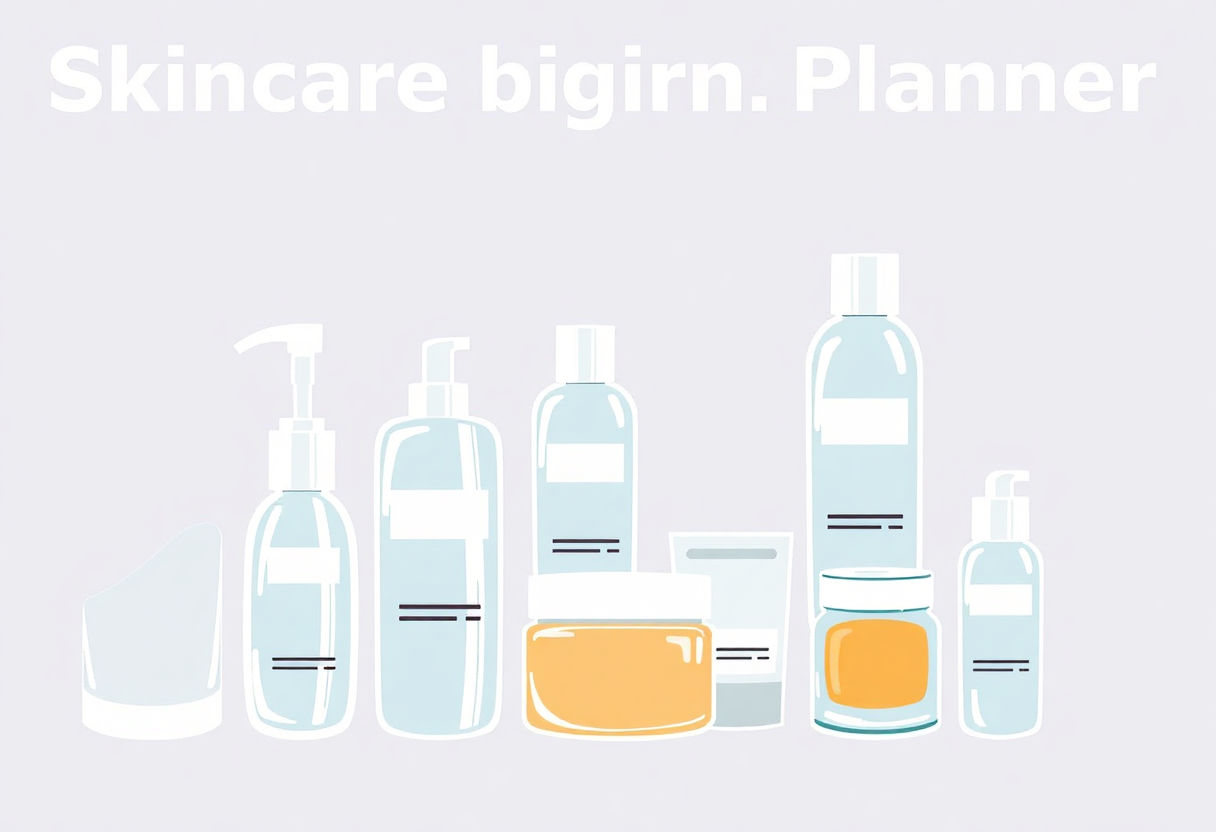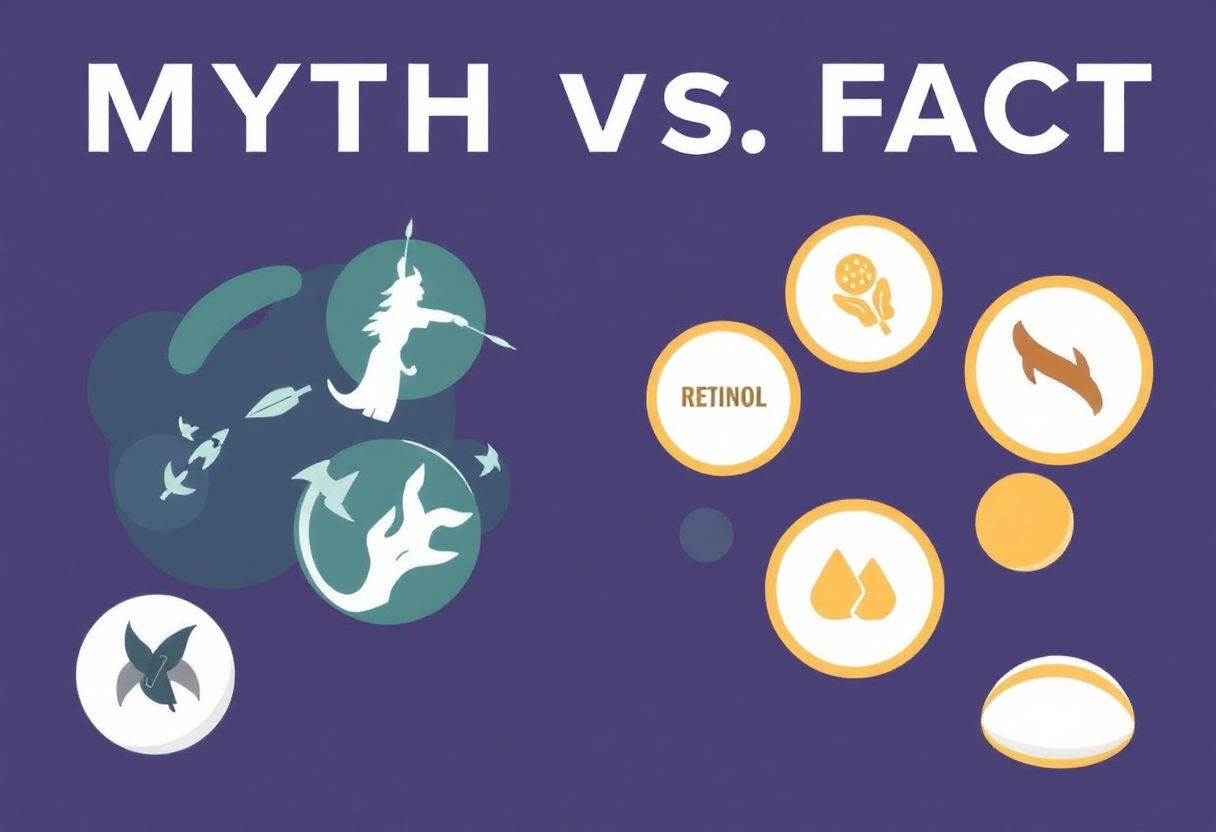Retinol has recently surged in popularity, carving an essential niche in body care routines. As a potent derivative of vitamin A, retinol offers transformative benefits for the skin, encompassing enhanced texture, tone, and resilience. This guide delves into the science behind retinol, illustrating its unparalleled advantages and addressing common concerns regarding its efficacy and safety. With insights on selecting suitable retinol-infused products, seamlessly integrating them into your regimen, and navigating potential side effects, this comprehensive exploration ensures a well-informed approach to skincare. Embark on this journey to discover how retinol can rejuvenate your body’s skin and elevate your self-care practice.
Key Takeaways
- Retinol-infused body care products are gaining popularity due to their exceptional ability to enhance skin texture and tone.
- Incorporating retinol into your routine can promote skin cell renewal, leading to a more youthful and vibrant appearance.
- When choosing retinol products, it’s crucial to consider skin type and specific concerns for optimal results.
- Properly integrating retinol into your daily regimen can maximize its benefits while minimizing potential side effects.
- Understanding the seasonal variations in retinol use ensures consistent efficacy throughout the year.
What is Retinol?
 Retinol is a derivative of vitamin A, an essential nutrient known for its potent biological activity that is widely celebrated in the realms of dermatology and skincare. As a member of the retinoid family, retinol plays a crucial role in the maintenance and enhancement of skin health. Its small molecular structure allows it to penetrate deeply into the skin, working at a foundational level to promote rejuvenation and renewal.
Retinol is a derivative of vitamin A, an essential nutrient known for its potent biological activity that is widely celebrated in the realms of dermatology and skincare. As a member of the retinoid family, retinol plays a crucial role in the maintenance and enhancement of skin health. Its small molecular structure allows it to penetrate deeply into the skin, working at a foundational level to promote rejuvenation and renewal.
The primary allure of retinol lies in its capability to accelerate cell turnover. By encouraging the shedding of old skin cells and the generation of new ones, retinol helps to smooth the skin’s texture, reduce the appearance of fine lines, and minimize pore size. Moreover, retinol is known to stimulate collagen production, a key protein that maintains the skin’s elasticity and structural integrity. This makes it an invaluable component for combating signs of aging and preserving youthful skin.
Retinol is also heralded for its abilities to manage acne and regulate oil production. By unclogging pores and curbing excess oil, it can deliver clearer, more radiant skin. Additionally, its exfoliating properties help to lighten hyperpigmentation and fade dark spots, resulting in a more even skin tone.
In the context of body care, utilizing retinol can effectively address all these concerns not just on the face, but across different areas of the body. Whether you want to refine skin texture, diminish signs of aging, or tackle blemishes, retinol is a versatile and powerful ingredient that can elevate your entire skincare regimen.
Benefits of Retinol for the Body
Retinol, a derivative of vitamin A, offers remarkable benefits for body care, enhancing skin health and appearance. Known for stimulating collagen production, retinol fortifies the skin’s barrier and improves elasticity, which can lead to a firmer and more youthful look. This attribute is particularly valued as it helps soften the appearance of fine lines and wrinkles, promoting a smoother texture.
Moreover, retinol excels in aiding cell turnover, which plays a pivotal role in shedding dead skin cells and revealing fresh, vibrant skin underneath. This process not only illuminates the skin but also helps even out skin tone, making it an effective component in addressing hyperpigmentation and age spots. Users can experience a more uniform complexion with regular application.
Another significant advantage of retinol is its ability to reduce the prevalence of acne and blemishes. By unclogging pores and balancing oil production, retinol helps diminish breakouts, leading to clearer skin. Its anti-inflammatory properties can also soothe irritated skin, providing relief for those with acne-prone skin.
Retinol’s versatility extends to its impact on rough and bumpy skin conditions, such as keratosis pilaris. The exfoliating action of retinol smoothens the skin, reducing rough patches and creating a more refined surface.
Incorporating retinol into one’s body care routine not only addresses specific concerns like aging or acne but also promotes an overall healthier and more radiant skin appearance. When used consistently, its transformative effects are both profound and rewarding, marking it as a valuable addition to modern skincare regimens.
How to Choose Retinol-Infused Products
 Selecting the right retinol-infused products for your body care regimen can be transformative for your skin, but it’s crucial to tailor choices to your specific needs. Begin by considering your skin type. For those with sensitive skin, opting for formulations containing lower concentrations of retinol can prevent irritation. Meanwhile, individuals with resilient or oily skin may benefit from products with higher retinol percentages for optimal results.
Selecting the right retinol-infused products for your body care regimen can be transformative for your skin, but it’s crucial to tailor choices to your specific needs. Begin by considering your skin type. For those with sensitive skin, opting for formulations containing lower concentrations of retinol can prevent irritation. Meanwhile, individuals with resilient or oily skin may benefit from products with higher retinol percentages for optimal results.
Understanding your skin concerns is also essential. If you’re mainly targeting signs of aging, like wrinkles and fine lines, seek out retinol creams or lotions designed for anti-aging. For uneven skin tone or texture, formulas that pair retinol with other active ingredients like hyaluronic acid can provide additional hydration and promote an even complexion.
When selecting these products, ingredients play a pivotal role. Look for products that include buffers such as ceramides and peptides which can aid in reducing potential irritation while bolstering the skin’s barrier function.
It’s also important to consider the product form. Retinol is available in various forms, such as creams, lotions, and serums. Creams and lotions are often more moisturizing, suitable for nighttime routines. Serums, being more potent, can deliver concentrated benefits but may require additional hydration layers.
Lastly, when choosing retinol products, it’s beneficial to pay attention to packaging. Retinol can degrade when exposed to air and light, so opt for products in opaque and airtight containers to maintain their efficacy for a longer period. By carefully evaluating these elements, you ensure that you are making informed choices for your skincare needs.
Incorporating Retinol into Your Routine
 Incorporating retinol into your skincare regimen requires careful consideration to maximize its benefits while minimizing potential irritation. Here’s how to seamlessly integrate retinol into your body care routine:
Incorporating retinol into your skincare regimen requires careful consideration to maximize its benefits while minimizing potential irritation. Here’s how to seamlessly integrate retinol into your body care routine:
-
Start Slowly: Begin by using retinol-infused products once or twice a week to allow your skin to adjust. Gradually increase frequency as your skin builds tolerance. This approach helps prevent dryness and irritation.
-
Apply on Clean, Dry Skin: For optimal absorption, ensure that your skin is thoroughly cleansed and completely dry before applying retinol. This helps in maximizing its effectiveness and reducing the risk of irritation.
-
Use a Pea-Sized Amount: A small, pea-sized amount is typically sufficient for covering the needed areas. Over-application can lead to increased irritation without accelerating results.
-
Combine with Hydrating Products: Retinol can be drying, so it is beneficial to pair it with products rich in hyaluronic acid or glycerin. These hydrating agents help maintain the skin’s moisture barrier.
-
Protect with Sunscreen: Retinol increases skin sensitivity to ultraviolet rays, thus, daily application of a broad-spectrum sunscreen with at least SPF 30 is crucial. Ensure to apply sunscreen even on cloudy days or when staying indoors for extended periods.
-
Monitor Skin’s Response: Pay attention to how your skin responds to retinol and make adjustments as needed. If you experience persistent redness or flaking, reduce usage frequency and consider consulting a dermatologist for tailored guidance.
By following these steps, you can effectively incorporate retinol into your skincare routine, harnessing its anti-aging and skin-renewing properties while maintaining skin health.
Potential Side Effects of Retinol
Retinol is highly regarded for its transformative effects on the skin, yet it is essential to be aware of its potential side effects. While these effects are typically mild and manageable, knowing how to address them is crucial for maintaining optimal skin health.
Common Side Effects
Many individuals may experience initial skin reactions when starting retinol. These can include:
- Dryness and Peeling: Retinol can accelerate the shedding of the skin’s outer layer, causing dryness and flakiness.
- Redness and Irritation: Some users might develop slight redness or irritation, especially those with sensitive skin.
- Increased Sensitivity to Sunlight: Retinol can heighten skin sensitivity to UV rays, necessitating enhanced sun protection.
Mitigation Strategies
To mitigate these side effects, consider the following approaches:
- Gradual Introduction: Incorporate retinol slowly into your routine, beginning with a lower concentration to allow your skin to acclimate.
- Moisturizing: Regular use of a soothing, hydrating moisturizer can counteract dryness and support the skin barrier.
- Sun Protection: Apply a broad-spectrum sunscreen daily to shield your skin from heightened UV sensitivity.
Allergic Reactions
Though rare, some individuals may experience an allergic reaction to retinol. Symptoms might include:
- Severe redness
- Swelling
- Itching
If any of these symptoms occur, discontinue use and consult a dermatologist.
Using retinol requires awareness and careful management, but by following these tips, you can effectively revel in its benefits while minimizing unwanted effects.
Seasonal Considerations for Retinol Use
Managing retinol use across different seasons is essential for maintaining optimal skin health and efficacy of the product. Winter, characterized by cold, dry air, often leads to increased skin dryness. During this time, it’s crucial to pair retinol with a rich, nourishing moisturizer to combat flakiness and maintain skin hydration.
In summer, the intense sun and heat can exacerbate retinol-induced photosensitivity. It’s vital to apply a broad-spectrum sunscreen daily to protect the skin from harmful UV rays. Some individuals may need to reduce the frequency of retinol application or opt for a lower concentration during these months.
Spring and fall, with their milder temperatures, serve as transitional periods ideal for adjusting your retinol routine. In spring, as daylight hours increase, begin incorporating more sun protection measures. Conversely, during fall, focus on preparing your skin for the drier days ahead by ensuring it’s sufficiently hydrated.
A general approach to seasonal retinol use includes:
- Adjusting product concentration: Shift to a lower concentration if your skin shows signs of irritation due to climate changes.
- Varying application frequency: Use retinol less frequently in high sun exposure seasons to reduce sensitivity.
- Integrating complementary skincare: Employ hydrating serums or creams, especially those containing hyaluronic acid, to maintain skin moisture levels.
Adapting your retinol regimen to suit seasonal changes not only bolsters skin protection but also ensures you reap consistent benefits throughout the year.
Expert Tips for Retinol Use
 For those new to retinol, a gradual introduction is essential. Start with lower concentrations, such as 0.25% or 0.3%, to gauge your skin’s tolerance. Alternating usage is advisable: apply retinol every other night, allowing your skin to adjust and minimize irritation.
For those new to retinol, a gradual introduction is essential. Start with lower concentrations, such as 0.25% or 0.3%, to gauge your skin’s tolerance. Alternating usage is advisable: apply retinol every other night, allowing your skin to adjust and minimize irritation.
Hydration is key when using retinol. Consider pairing your routine with a high-quality moisturizer to combat potential dryness. Look for formulations containing ingredients like hyaluronic acid or ceramides, which provide lasting hydration and reinforce your skin’s natural barrier.
Timing matters, particularly with retinol products. Nighttime application ensures that the active ingredients are not broken down by sunlight. Moreover, always pair with a sunscreen during the day to shield your skin from UV damage, as retinol can increase sensitivity to sunlight.
Combining retinol with other active ingredients should be done cautiously. Avoid using retinol with potent actives like alpha hydroxy acids (AHAs) or benzoyl peroxide unless instructed by a skincare professional. Mixing these can lead to excessive irritation and compromised skin health.
For sensitive skin types, consider using a retinol buffer method. This involves applying a layer of moisturizer before your retinol product to dilute the potency slightly, reducing the risk of irritation.
Consistency is crucial for seeing long-term benefits. While some might experience short-term dryness, the cumulative effects of regular retinol use can lead to significant improvements in skin texture, tone, and overall radiance. Maintain a steady regimen for best results.
Common Myths About Retinol
 Retinol, a superstar in the skincare world, often falls victim to several persistent myths that can create confusion. Understanding these misconceptions is crucial for embracing the full potential of retinol-infused body care.
Retinol, a superstar in the skincare world, often falls victim to several persistent myths that can create confusion. Understanding these misconceptions is crucial for embracing the full potential of retinol-infused body care.
One prevalent myth is that more retinol means better results. Although it’s true that retinol is effective, using it in excess can lead to skin irritation, dryness, or peeling. It is essential to start with a lower concentration and gradually increase usage as your skin builds tolerance. This method not only minimizes potential side effects but also maximizes long-term benefits.
Another common belief is that retinol is too harsh for sensitive skin. While retinol can be potent, formulations designed for sensitive skin allow everyone to enjoy its benefits. Choosing products with calming ingredients like aloe vera or centella asiatica can help soothe irritation, making retinol inclusion a viable option even for delicate skin types.
Contrary to the myth that retinol should only be applied at night, advancements in formulation technology have led to products that can be used during the day. Daytime retinol products often contain protective antioxidants and sunscreen, allowing users to safely enjoy retinol’s benefits under the sun.
A widely circulated misconception is that retinol thins the skin. Scientifically, retinol actually works to thicken the skin by promoting collagen production and accelerating the renewal of skin cells. This strengthening process can effectively reduce the appearance of fine lines and improve the overall texture of the skin.
Finally, some assume that results from retinol use are immediate. Retinol requires consistent application over a period of weeks to months to reveal visible changes, as it works at the cellular level to rejuvenate the skin. Patience and persistence are key to achieving the desired outcomes with retinol-infused products.
Conclusion
Retinol-infused body care emerges as a transformative element in skincare routines, offering unparalleled benefits for skin rejuvenation and repair. By understanding how to select suitable products and incorporate them effectively, users can harness retinol’s full potential. Consideration of seasonal usage and expert tips enhances its efficacy while minimizing side effects. As myths surrounding retinol are debunked, it becomes clear that this powerful ingredient is not only essential but increasingly accessible for comprehensive skincare. Embrace retinol to achieve healthy, radiant skin and unlock future opportunities for advanced, targeted body care solutions.
Frequently Asked Questions
What is retinol, and why is it used in body care products?
Retinol is a form of Vitamin A that promotes skin renewal and enhances collagen production. In body care products, it helps improve skin texture and tone, making it a popular choice for addressing signs of aging and skin imperfections.
How should I incorporate retinol into my body care routine?
To incorporate retinol into your routine, start by using a low concentration and apply it at night, gradually increasing usage as your skin builds tolerance. Always follow with a moisturizer and remember to use sunscreen during the day to protect your skin from sensitivity.
Are there any side effects of using retinol-infused body care products?
Some initial side effects may include mild irritation, redness, or peeling, as the skin adjusts to retinol. To mitigate these effects, use the product less frequently at first and increase usage as your skin becomes accustomed to it.
Can everyone use retinol products, or are there specific skin types that should avoid them?
While retinol can benefit most skin types, individuals with exceptionally sensitive skin or certain skin conditions might need to consult a dermatologist before use. Patch testing is recommended for those who are new to retinol to ensure compatibility.
How long does it take to see results from using retinol body care products?
Visible improvements can typically be observed within a few weeks to a couple of months, depending on the individual’s skin type and the formulation’s strength. Consistent use is essential for achieving noticeable and lasting results.
